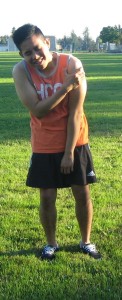Impetigo is a highly transmittable skin ailment. It generally forms on the face, neck and hands of infants and young children. Children who are using diapers are likely to develop the skin condition around the diaper area. In most cases, the condition settles within 2-3 weeks.
What are the causes?
Impetigo is brought about by a skin infection due to the following bacteria:
- Staphylococcus aureus
- Streptococcus pyogenes
The indications of impetigo can cause discomfort such as an itchy rash.
An infection can develop in various ways such as form:
- Insect bites
- Skin contact with an individual with impetigo
- Skin injuries
- Animal bites
- Touching objects that were used by an infected individual such as bedding, towels or toys
Indications
The indications of impetigo can cause discomfort. Even though the symptoms slightly vary for each type of impetigo, they are usually similar and can include:
- Itchy rash
- Reddened sores that easily pop and leave behind a yellowish crust
- Skin lesions
- Blister filled with fluid
- Swollen lymph nodes
Who are at risk?
Some individuals are likely to end up with impetigo. The usual risk factors include the following:
- Children 2-6 years of age
- Poor hygiene
- Children attending day care center or school
- Warm weather
- Irritated skin due to other conditions such as dermatitis
- Diabetes
- Living in crowded environments
- Engaging in activities involving skin-to-skin contact
- Compromised or weakened immune system
Management of impetigo
The treatment for impetigo is based on the severity of the symptoms and the type of bacteria responsible. In severe cases, the treatment might involve antibiotics.
- Antibiotic creams – this is applied directly on the skin. Make sure that the skin is clean before application to allow full penetration in the sores.
- Oral antibiotics – these are available in liquid for children and pill form of adults
Home remedies
For mild cases, the doctor might suggest simple hygienic measures that can be done at home. These measures aim on helping the skin heal and prevent impetigo from spreading.
- Clean the affected area several times throughout the day using water or an antibacterial wash. Avoid scrubbing the area since this can lead to further irritation. Pat the skin dry and apply an antibacterial or over-the-counter antibiotic ointment.
- If there are several scabs, soak the area to get rid of some of the scabbing and promote healing. Soak in soapy water or 1:32 vinegar solution and water.
- Avoid picking or touching the affected areas. Apply a non-adhesive dressing to minimize the spread of impetigo. Always wash hands thoroughly after touching the affected areas.

